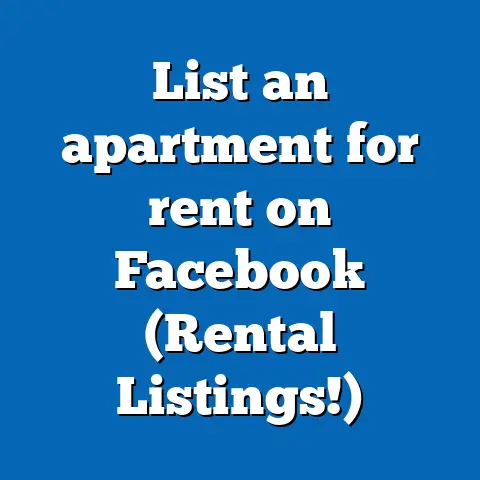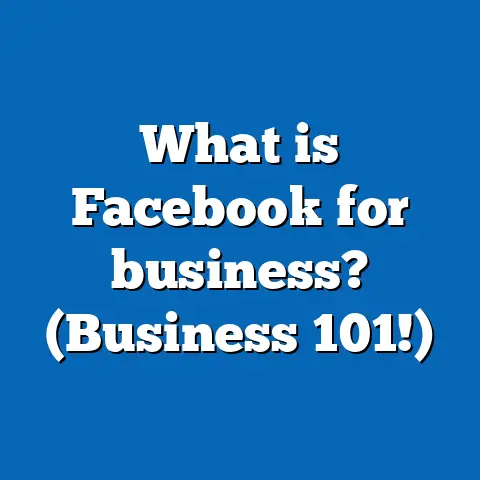Why my Facebook ad is not delivering? (Ad Delivery Issues!)
Challenging the Misconception: Facebook Ads Should Work Automatically
Let’s set the record straight. Many think that once you hit that ‘publish’ button on Facebook ads, magic happens, and leads start pouring in. But if you’ve tried running ads, you know it’s not always that simple. If you’re scratching your head, wondering why your Facebook ad isn’t delivering, you’re definitely not alone. Let’s dive into this puzzle and figure out what might be going wrong.
What’s Inside This Guide?
I’m going to break down the reasons your Facebook ads might not be delivering and help you troubleshoot common issues. We’ll cover everything from budget concerns to audience targeting mishaps. I’ll also share some personal stories and unique insights that might just light up that bulb in your brain. So, stick around, and let’s get those ads working for you!
Unpacking the Mystery of Ad Delivery
Is Your Budget Too Tight?
One of the first things to check is your ad budget. Are you allocating enough funds to reach your audience? Facebook requires a minimum budget to run ads effectively. If your budget is too low, it might be a reason why your ads aren’t getting delivered.
- Check Your Daily Budget: Ensure it meets Facebook’s minimum requirement.
- Understand Bidding: If you’re using manual bidding, make sure your bid is competitive enough.
Example: I once set up a campaign with a daily budget of $2, thinking it was enough. Spoiler: It wasn’t. Increasing it to $10 made all the difference.
Digging Deeper into Budgeting Strategies
When considering your ad budget, it’s crucial to understand different budgeting strategies and how they can impact your ad delivery:
- Daily vs. Lifetime Budget: Choose between setting a daily budget or a lifetime budget. A daily budget spreads your spending evenly each day, whereas a lifetime budget gives you flexibility over the entire campaign duration.
- Bid Strategy Options: Explore automatic versus manual bidding strategies. Automatic bidding allows Facebook to optimize your bids for the best results within your budget, while manual bidding gives you more control over how much you’re willing to pay per action.
- Budget Pacing: Be mindful of how quickly you’re spending your budget. Rapid spend can lead to oversaturation and ad fatigue, especially if your audience is small.
Targeting Too Broad or Too Narrow?
Targeting is where things get interesting—and tricky. If your audience is too broad, your ad might not find the right people. Too narrow, and it might not find enough people.
- Use Audience Insights: Leverage Facebook’s tools to fine-tune your audience.
- Experiment with Lookalike Audiences: They can be a goldmine when used correctly.
Personal Insight: I once targeted a super specific niche, but my ad didn’t deliver. Expanding the audience slightly helped in reaching more potential customers.
Exploring Advanced Targeting Options
To refine your targeting strategy, consider these advanced options:
- Custom Audiences: Use data from customer lists, website traffic, or app activity to create highly targeted custom audiences.
- Location Targeting: Tailor your ads based on geographic locations, whether targeting specific cities or broader regions.
- Demographic and Interest Targeting: Utilize demographic data such as age, gender, education level, and interests to narrow down your audience further.
- Behavioral Targeting: Target users based on purchase behavior, device usage, and other online activities.
Technical Hurdles and How to Overcome Them
Ad Relevance Score
Facebook assigns a relevance score based on how well your ad is received by your target audience. A low score can affect ad delivery.
- Monitor Engagement: High engagement can improve your score.
- Update Creatives Regularly: Keep your content fresh to maintain interest.
Real-World Tip: A friend once revamped their ad creative after noticing a dip in relevance score, leading to improved results.
Understanding the New Quality Ranking Metrics
In 2019, Facebook replaced the relevance score with three new metrics: Quality Ranking, Engagement Rate Ranking, and Conversion Rate Ranking. Understanding these can help improve ad delivery:
- Quality Ranking: Measures the perceived quality of your ad compared to competitors targeting the same audience.
- Engagement Rate Ranking: Compares expected engagement with other ads competing for the same audience.
- Conversion Rate Ranking: Assesses expected conversion rates compared to similar ads.
By focusing on these metrics, you can optimize your ads for better performance.
Avoiding Policy Violations
Have you checked if your ad complies with Facebook’s policies? Violations can halt delivery in its tracks.
- Review Facebook’s Advertising Policies: Make sure your ad content, landing pages, and targeting align with guidelines.
- Use the Ad Library: Check similar ads to understand what works.
Storytime: I once had a campaign halted due to a minor text violation. Reviewing policies and making small tweaks got things back on track.
Navigating Common Policy Pitfalls
Facebook has strict policies that can impact ad delivery:
- Prohibited Content: Ensure your ads don’t contain prohibited content such as misleading claims or inappropriate imagery.
- Restricted Content: Some content is allowed but with restrictions. Familiarize yourself with these rules for alcohol, gambling, or health-related products.
- Text Overlay in Images: Avoid excessive text in ad images as it can reduce delivery reach.
Optimizing for Better Results
Creative Content Matters
Never underestimate the power of good visuals and copy. Are your ads engaging enough?
- Test Different Formats: Try video, carousel, or slideshow ads.
- Craft Compelling Copy: Keep it concise but impactful.
Example: Switching from a static image to a short video increased engagement by 30% in one of my campaigns.
Enhancing Ad Creative Effectiveness
To maximize creative effectiveness:
- Storytelling Approach: Use storytelling techniques to connect emotionally with your audience.
- A/B Testing: Continuously test different versions of creatives to identify what resonates best with your audience.
- Consistent Branding: Ensure visuals and messaging align with your brand identity for a cohesive experience across platforms.
Diving into Advanced Advertising Techniques
Leveraging Retargeting Strategies
Retargeting is key to reaching users who have previously interacted with your business:
- Dynamic Ads: Use dynamic ads to retarget users with personalized product recommendations based on browsing behavior.
- Website Custom Audiences: Create custom audiences from website visitors to serve them tailored ads encouraging conversions.
Exploring Automated Rules
Automated rules can streamline campaign management:
- Setting Performance Triggers: Automate actions like increasing budgets or pausing underperforming ads based on specific performance triggers.
- Time-Saving Benefits: Utilize automated rules to save time and focus on strategic decision-making rather than manual adjustments.
Actionable Steps to Revive Your Campaigns
- Review Budget Settings: Make sure they align with your goals.
- Analyze Targeting Parameters: Adjust as needed based on performance data.
- Refresh Ad Creatives: Keep content relevant and engaging.
- Check for Policy Compliance: Regularly ensure adherence to guidelines.
- Monitor Performance Metrics: Use insights to tweak and improve.
FAQs: Common Concerns Addressed
Q1: What if my ad is approved but not delivering?
- Check targeting and budget settings and ensure high-quality creatives.
Q2: How do I improve my ad relevance score?
- Engage your audience with fresh content and interact promptly with comments.
Q3: Can paused campaigns affect delivery?
- Yes, resuming them may take time to regain momentum.
Q4: Why does my ad show as pending review for long?
- It could be due to high volume; consider reaching out to support.
By understanding these nuances and following these steps, you’ll be better equipped to tackle ad delivery issues on Facebook. Happy advertising!






